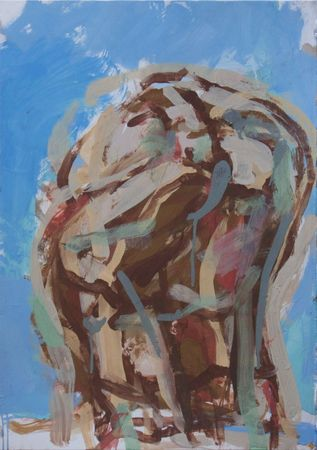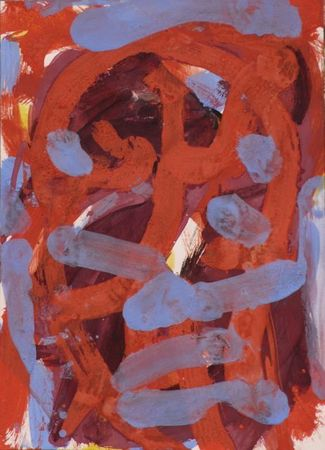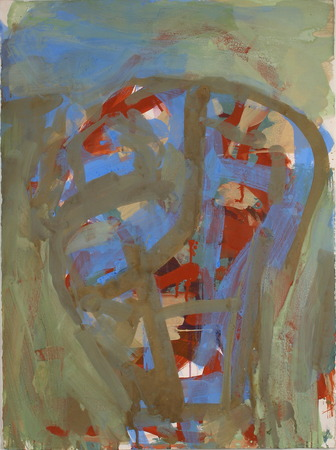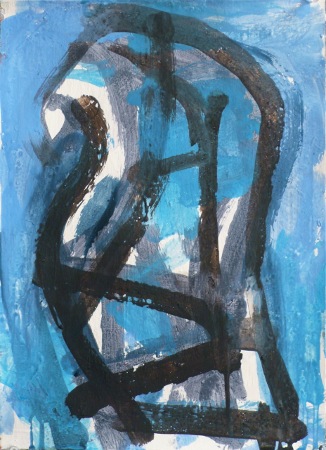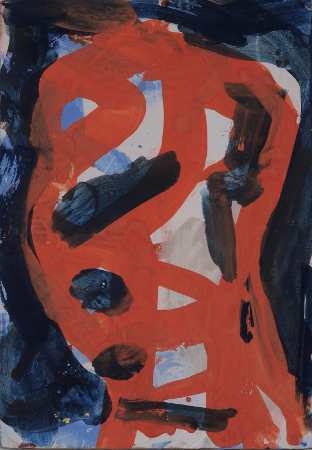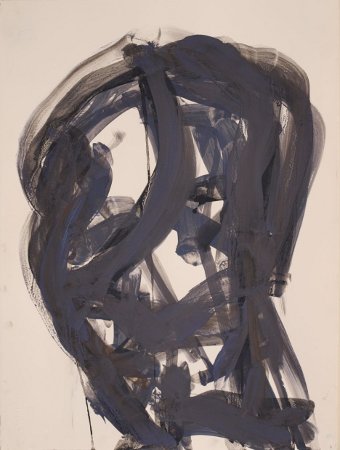Holding Pattern
Thomas W. Kuhn
The human figure is one of the oldest forms of representational expression, from neolithic cave paintings to contemporary portraits. Through the ages, the portrayal of the human figure has had different forms of approximation: from an archaic typecast to idealistic representation to the capturing of individual characteristics in great minutiae. Facial expression, gesture and posture, acquired though habits and cultural expectations though a lifetime can be as expressive and individual and the physical appearance. Both are temporal in their own way, by the gradual development and decline of the body, by the body's movement in space and time, by action and reaction, and even in phases of rest. The postures assumed in time are vectors in space; as dynamic axes they represent at any given moment an expression of energy that is specific to this moment. This position of the head, of the arms or the torso can at the same time be just as characteristic and expressive as the physical substance of the torso or the play of facial expressions.
"Holding Pattern" offers the contemplation of these ideas through painting. Lex Braes explores the course of the energy of the posture, which defines the "pattern." Using red brushstrokes he follows the body's contours, revealed as lines of energy. Depth is being built up by layers of painting, forming a spatial construct, suggesting "before" and "behind". Llines overlap and appear in association like sinews or fibres of muscle, taking on a similarity with an anatomical study, a dissection of a real body. In some sections of the paintings the red line creates definition and substance of the body, while expanses of colour mark out the body part. In other places colour and structure continue behind the contours of the body as if the body was transparent. This is consistent with the circumstance that the temporal presence of the body in space results in the possibility- even the utmost probability - of its absence, which can only be experienced because of the earlier appearance. Posture is as undefined as specific identity. The upper body is upright, the back arching backwards, the arms are raised and the hands reach for the head. However, this position is changed in "Holding Pattern VII". The figure appears mirrored and does not stand upright, but bends downward, as if a different perspective was assumed.
Colour offers more opportunity for the expression of temporal or emotional change. Blue, yellow and green expanses engage with the crimson lines, giving each painting significantly differentiated temperatures, from hot to cold. The contrast between line and space varies from the sharply outlined icy cool "Holding Pattern VI" to the warmly fluid "Holding Pattern V". Within the entire series, including the accentuated studies and sketches, a whole spectrum of interpretative possibilities open up, not least regarding which action is being carried out here, by whom, and why. The degree of abstraction is an open question. In its entirety, "Holding Pattern" can be understood as a meditation. Typified structures and individual characteristics meld together through the process of painting into an inseparable amalgam.
Thomas W. Kuhn, Dusseldorf, Germany, 2009
Translated from German by Ursula Dievenich, December 2009
